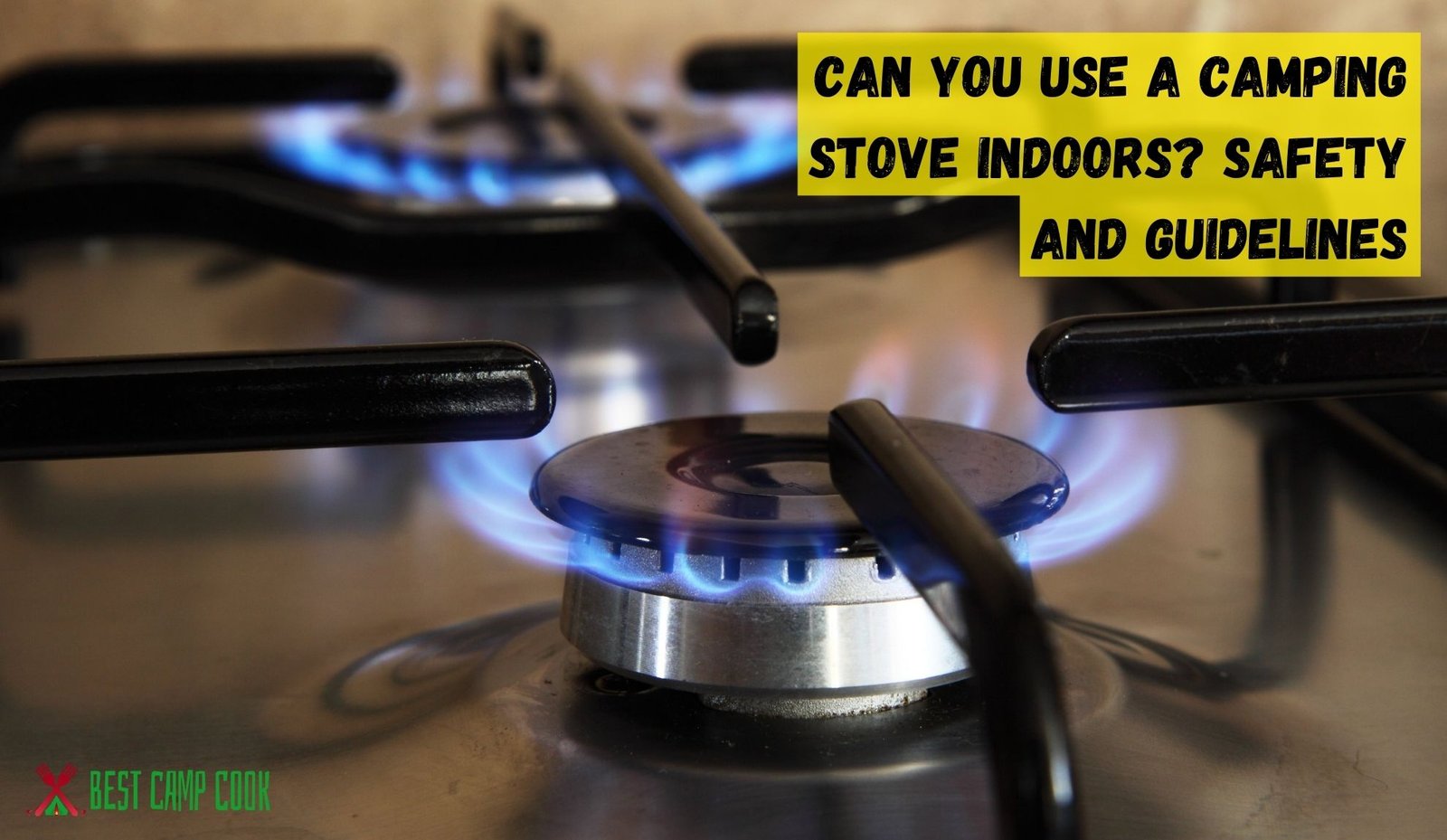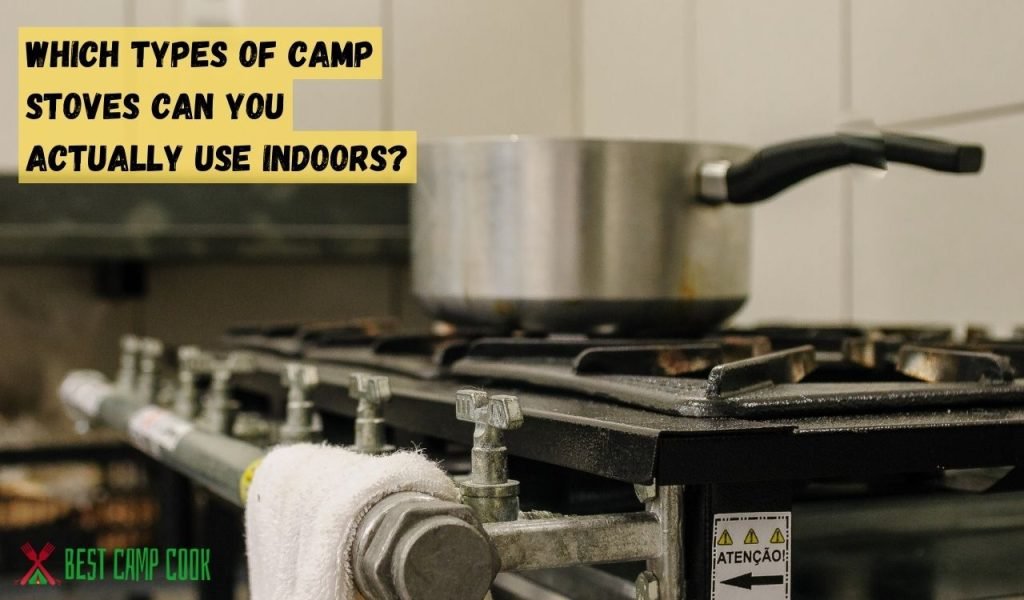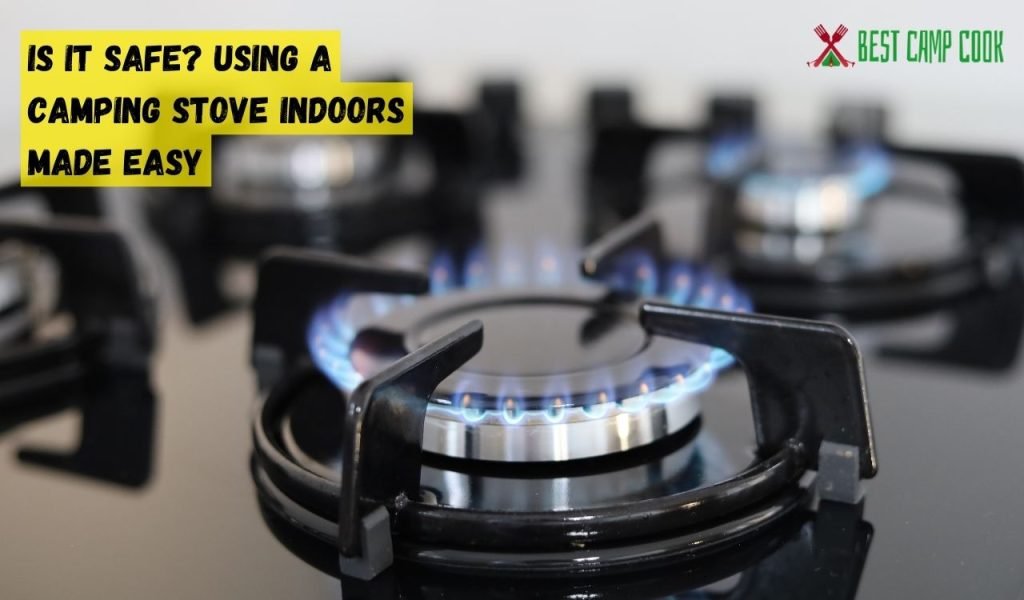Physical Address
304 North Cardinal St.
Dorchester Center, MA 02124
Physical Address
304 North Cardinal St.
Dorchester Center, MA 02124

Can You Use a Camping Stove Indoors? Find out the Surprising Answer Here! Whether you’re a seasoned outdoor enthusiast or just starting your camping journey, this question might have crossed your mind.
Well, we’ve got the inside scoop for you! Using a camping stove indoors may seem tempting when the weather takes a turn or you’re craving a hot meal while staying cozy. But before you spark up that flame, there are some crucial things you need to know.
In this guide, we’ll reveal the truth about using a camping stove indoors and share some expert tips to keep you safe and satisfied during your indoor adventures. Get ready to discover the do’s and don’ts that will make your camping experience a breeze – even when you’re inside!
Main Summary: Can You Use a Camping Stove Indoors
Camping stoves are designed for outdoor use due to safety concerns. Using them indoors can lead to carbon monoxide poisoning and fire hazards. Always follow manufacturer guidelines and opt for indoor-safe alternatives for indoor cooking. Safety first!
When it comes to enjoying the great outdoors, many people love the convenience of cooking with a camping stove. But what if you find yourself in a situation where using a camping stove indoors seems like a tempting option?
Can you use a camping stove indoors without putting yourself and others at risk? Let’s delve into this topic and explore the risks and considerations associated with using a camping stove indoors.

Using a camping stove indoors poses several potential risks that you need to be aware of. It’s crucial to understand these risks to make informed decisions about your safety.
One of the most significant risks of using a camping stove indoors is the increased potential for fire hazards. Unlike outdoor settings where open flames and heat sources are more manageable, indoor environments can be more confined and flammable. Accidental spills, contact with flammable materials, or inadequate ventilation can all contribute to the risk of fire when using a camping stove indoors.
Another grave risk associated with using a camping stove indoors is the threat of carbon monoxide poisoning. Camping stoves produce carbon monoxide, a colorless and odorless gas that can be deadly in high concentrations. When used in enclosed spaces, such as tents, cabins, or poorly ventilated rooms, carbon monoxide can build up quickly, leading to serious health complications or even death.
Proper ventilation is crucial when using a camping stove indoors. Without adequate airflow, toxic gases can accumulate, increasing the risk of carbon monoxide poisoning. Ensuring proper ventilation requires open windows, doors, or using exhaust fans to facilitate the safe release of combustion byproducts.

Not all camping stoves are suitable for indoor use. When considering using a camping stove indoors, it’s essential to select the right type that is specifically designed for indoor cooking. Look for stoves that are labeled as safe for indoor use or have features like low-emission burners.
Before using a camping stove indoors, carefully read the manufacturer’s instructions and follow them diligently. The instructions will provide important safety guidelines specific to your stove model. Pay attention to ventilation requirements, fuel types, and any other recommendations provided.
When using a camping stove indoors, it’s crucial to establish a safe cooking area and ensure you have the best kitchen setup. Clear away any flammable materials, such as curtains, paper, or plastics, from the vicinity of the stove to minimize the risk of fire. It’s also important to keep a safe distance between the stove and any objects that could potentially catch fire.
Proper ventilation is key to using a camping stove indoors safely. Open windows and doors to allow fresh air to circulate. If your indoor space doesn’t have adequate ventilation, consider using exhaust fans or setting up additional portable fans to ensure proper airflow.
Since carbon monoxide is a significant concern when using a camping stove indoors, it’s crucial to monitor the levels of this dangerous gas. Consider using a portable carbon monoxide detector to alert you if carbon monoxide levels become unsafe. Regularly check the detector’s batteries and ensure its proper functioning.
To prevent accidents and mitigate risks, never leave a camping stove unattended when it’s in use indoors. Stay close by and be vigilant while cooking. This way, you can promptly address any issues that may arise, minimizing the chance of accidents or fires.
Even with the utmost caution, accidents can still happen. It’s wise to have a fire extinguisher readily available in case of emergencies. Make sure everyone in your household knows how to operate the extinguisher properly.

Certain camp stoves are specifically designed to emit lower levels of harmful gases, making them suitable for indoor use. These low-emission stoves are equipped with features that enhance combustion efficiency and minimize carbon monoxide production. Always check the product specifications or labels to ensure the stove you are considering is designated for indoor use.
Electric camping stoves are a safe option for indoor cooking. They rely on electricity rather than open flames or fuel combustion, eliminating the risks associated with carbon monoxide emissions and fire hazards. Electric stoves offer precise temperature control and are easy to use, making them an excellent choice for indoor cooking.
Some camping stoves are specifically designed for indoor use and utilize butane or propane as fuel sources. These stoves are equipped with safety features such as built-in sensors that detect oxygen levels and automatically shut off if they drop to unsafe levels. Always check the manufacturer’s instructions and labels to ensure the stove is suitable for indoor use.

When camping indoors without a stove, there are several alternative cooking methods you can explore. Here are a few options:
Consider using portable electric cooktops as a convenient and safe way to cook indoors while camping. These compact appliances can be powered by electricity and provide a reliable heat source for various cooking needs. They are easy to use, clean, and can be an excellent alternative to traditional stoves.
Slow cookers and crockpots are ideal for preparing meals indoors while camping. These appliances utilize low, steady heat to slowly cook food over an extended period. Simply add your ingredients, set the desired cooking time, and let the slow cooker do the work.
They are perfect for making soups, stews, and other slow-cooked dishes. After enjoying your delicious meal, remember to wash your dishes properly to maintain cleanliness and hygiene in your camping area.
If you have access to a balcony, patio, or designated outdoor area, consider using a portable grill for indoor cooking while camping. These grills are designed for outdoor use but can be safely used in well-ventilated indoor spaces. Make sure to follow the manufacturer’s instructions and use the grill responsibly to prevent accidents.
Microwaves can be an efficient way to cook or heat up meals while camping indoors. They offer quick cooking times and are suitable for reheating leftovers or preparing simple meals. However, keep in mind that microwaves may not provide the same level of versatility as other cooking methods.
When camping indoors without a stove, it’s important to plan your meals accordingly. Here are some ideas for preparing meals without a stove:
Opt for meals that don’t require cooking, such as salads, sandwiches, wraps, or pre-packaged foods. These options can be convenient, require minimal preparation, and are perfect for quick and easy meals.
Pack pre-cooked meals or ready-to-eat items that can be enjoyed without the need for heating. This can include canned goods, pre-packaged meals, energy bars, fruits, and vegetables. Ensure you have a sufficient supply of non-perishable foods for your camping duration.
Prepare one-pot meals that can be easily cooked using alternative methods mentioned earlier, such as slow cookers or portable electric cooktops. Alternatively, explore recipes that require minimal cooking or no cooking at all, such as salads, cold pasta dishes, or raw vegetable-based meals.

Using a camping stove indoors can be convenient in certain situations, such as during power outages or in small living spaces. However, it’s crucial to prioritize safety when using any type of open flame or heat source indoors. In this article, we will discuss the key factors to consider and steps to follow to ensure safe usage of a camping stove indoors.
Before using a camping stove indoors, it’s important to assess the potential safety risks involved. Consider the following factors:
Proper ventilation is critical when using a camping stove indoors. Ensure that the area where you plan to use the stove has adequate airflow to prevent the accumulation of harmful gases, such as carbon monoxide. Open windows or doors to allow fresh air to circulate.
Keep flammable materials, such as curtains, paper, or cleaning agents, well away from the stove. Maintain a safe distance to minimize the risk of accidental fires.
Place the camping stove on a stable surface to prevent tipping or accidents. Ensure that it is positioned on a level and secure platform to avoid any mishaps while cooking.
To enhance safety when using a camping stove indoors, follow these precautionary measures:
Carefully read and follow the manufacturer’s instructions and guidelines provided with the camping stove. These guidelines will outline the specific safety precautions and usage recommendations for indoor cooking.
Carbon monoxide (CO) is an odorless and potentially deadly gas produced by the incomplete combustion of fuel. To safeguard against CO poisoning, install carbon monoxide detectors in your living space. These detectors will alert you if dangerous levels of CO are detected, allowing you to take immediate action.
Have a fire extinguisher readily available in case of emergencies. Ensure that you know how to operate it effectively. Additionally, having a fire blanket or baking soda nearby can help smother small fires that may occur.
A camping stove is typically designed for outdoor use, such as while camping, hiking, or picnicking. It should be used in well-ventilated areas away from flammable materials and never be operated indoors unless specifically designed for indoor use.
Coleman camp stoves are primarily designed for outdoor use. While they are known for their durability and reliability, using them indoors is not recommended unless they are specifically labeled for indoor use. Always refer to the manufacturer’s instructions and warnings before using any camping stove indoors.
Solo stoves are popular for their compact design and efficient performance. However, they are primarily designed for outdoor use.
Using a Solo stove indoors is generally not recommended, as it may pose safety risks due to the emission of smoke, carbon monoxide, and potential fire hazards. It’s crucial to adhere to the manufacturer’s guidelines and only use the stove in appropriate outdoor settings.
Sleeping in a room with a gas stove is not safe as it can lead to carbon monoxide poisoning. Gas stoves emit carbon monoxide, which is a colorless and odorless gas that can be deadly when inhaled in high concentrations. To ensure your safety, it is important to have proper ventilation and avoid sleeping in an enclosed space with a gas stove.
Using a camping stove in a garage is not recommended due to safety concerns. Garages are typically enclosed spaces with limited ventilation, which can lead to the accumulation of harmful gases, such as carbon monoxide, released by the stove.
It is essential to prioritize safety and use camping stoves only in well-ventilated outdoor areas, away from flammable materials and structures like garages.
Camping stoves can be safe when used correctly and with proper precautions. It’s important to follow the manufacturer’s instructions, ensure proper ventilation, and keep flammable materials away from the stove. Adhering to safety guidelines minimizes the risk of accidents and ensures a safe camping experience.
Camping gas stoves offer several benefits. They are portable and lightweight, making them easy to carry during camping trips. Gas stoves provide a reliable source of heat for cooking, allowing you to prepare meals efficiently.
They also offer precise heat control, enabling you to adjust the flame intensity according to your cooking needs. Additionally, camping gas stoves are compatible with various cookware types, providing versatility for your camping cooking adventures.